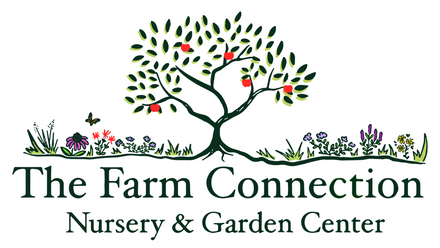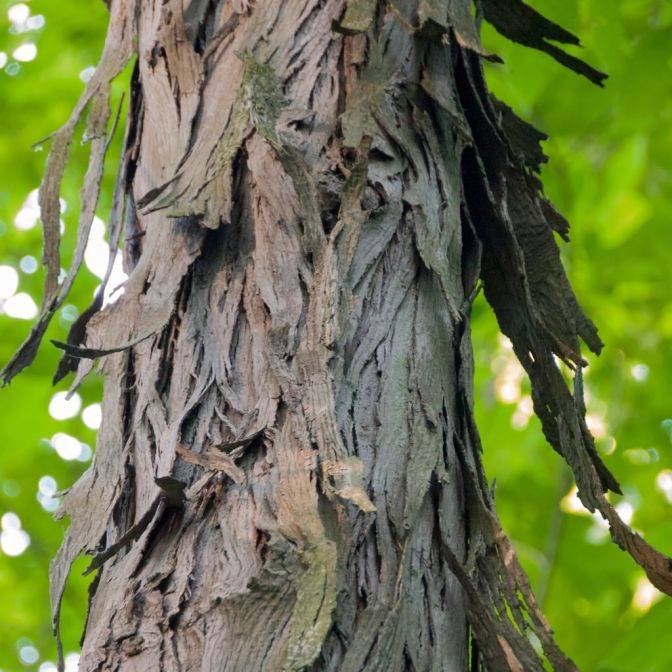Hickory, Shagbark, Bare Root
Sweet Nuts & Wildlife Habitat in One Tree
Hickory, Shagbark, Bare Root - Bare Root / 6-18" Seedling is backordered and will ship as soon as it is back in stock.
Couldn't load pickup availability
Delivery and Shipping
Delivery and Shipping
Make sure to thoroughly review our entire "Shipping, Returns, Refunds, and Our Guarantee" page for all relevant details about ordering from our store.
Making a purchase from our store constitutes an agreement to all the conditions outlined in those policies.
We appreciate your support and look forward to being your favorite plant provider!
Subscribe to our newsletter
Sign up for exclusive offers.
Shagbark Hickory (Carya ovata)
Shagbark Hickory is a majestic, long-lived native hardwood best known for its shaggy, peeling bark and sweet, edible nuts. Found throughout the eastern and central U.S., this tree is ecologically and culturally significant—providing essential food for wildlife, durable wood, and an important component of upland hardwood forests. It thrives in well-drained soils, makes a strong canopy tree in food forests and silvopasture systems, and contributes deeply to biodiversity by supporting specialist insect and bird species.
Key Characteristics
-
Nut-producing tree with rich, sweet flavor
Shagbark Hickory nuts are smaller than pecans but similarly rich, sweet, and nutritious. They are high in healthy fats and protein and have been eaten by humans for thousands of years, roasted or ground into meal. The nuts ripen in fall and are also heavily used by squirrels, foxes, and turkeys. -
Valuable host plant for specialist moths and butterflies
This tree supports over 200 species of Lepidoptera, including the Luna Moth (Actias luna) and Hickory Horned Devil (Citheronia regalis), the caterpillar of the Royal Walnut Moth. These insects are critical food sources for birds and part of a healthy woodland ecosystem. -
Excellent canopy tree for food forests and silvopasture
With a tall, straight trunk and high branching habit, Shagbark Hickory is well-suited as a canopy layer in regenerative agroforestry systems. Its deep taproot system minimizes competition with understory crops and allows it to withstand drought once established. -
Iconic bark and wildlife shelter
The peeling, shaggy bark creates essential winter roosting habitat for endangered Indiana bats (Myotis sodalis) and other forest-dwelling bat species. Its bark structure and sturdy form also provide nesting and shelter opportunities for birds and small mammals. -
Hard, durable wood with traditional uses
Valued for its strength and shock resistance, the wood has been used for tool handles, bows, and firewood. Its high-energy wood burns hot and long, making it a staple for traditional wood heating.
Product Details
- Native range: Eastern and Central U.S., especially in upland and mixed hardwood forests
- Plant life cycle: Deciduous Tree
- Sun requirements: Full sun to partial shade
- Soil requirements: Medium-dry to medium; prefers deep, fertile, well-drained soils
- Mature height: 60–100 feet
- Bloom time: Late spring
- Bloom color: Inconspicuous yellow-green catkins
- USDA Hardiness zones: 4–8
Shagbark Hickory is a legacy tree with deep roots in North American ecology, food systems, and culture. It’s a powerful choice for homesteaders, food forest designers, and land stewards looking to support wildlife, build soil, and grow resilient tree crops for generations.
-
Sun RequirementsFull Sun, Part Sun/Shade
-
Soil RequirementsMedium, Medium-Dry, Medium-Wet
-
Bloom ColorGreen, Yellow
-
Bloom TimeApril, May
-
USDA Hardiness ZonesZone 4, Zone 5, Zone 6, Zone 7, Zone 8
-
Native StatesMaine, Vermont, New Hampshire, New York, Pennsylvania, Ohio, Indiana, Illinois, Michigan, Wisconsin, Missouri, Kentucky, Tennessee, Virginia, North Carolina, South Carolina, Georgia, Alabama, Mississippi, Arkansas, Louisiana, Oklahoma, Texas
Payment & Security
Payment methods
Your payment information is processed securely. We do not store credit card details nor have access to your credit card information.




